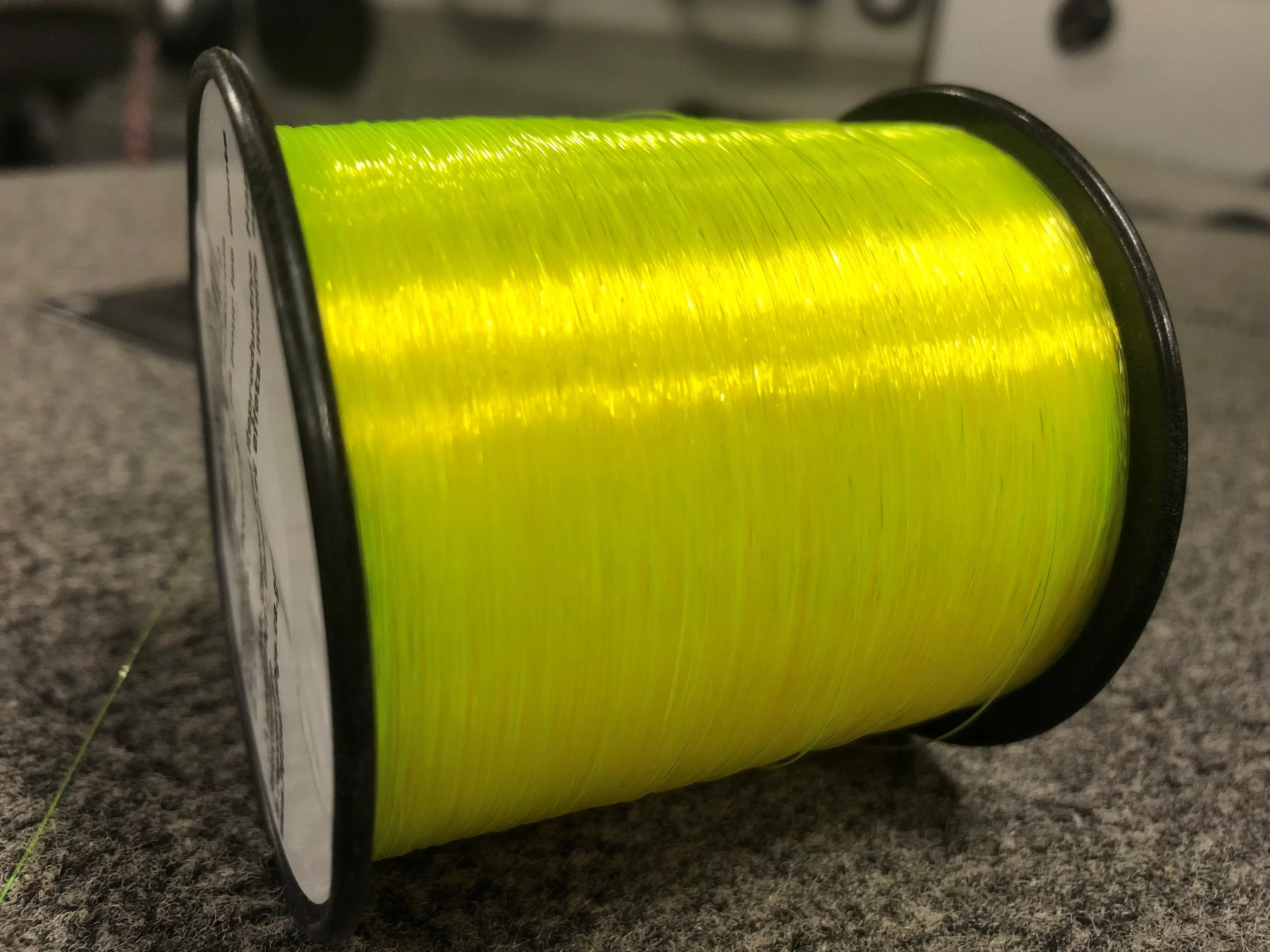When & How to Use High-Vis Line

* This page contains affiliate links. The Great Lakes Fisherman may earn a commission on items purchased through these links. For more on this, please click here.
Have you ever wondered how often you missed a fish that took the bait but you never knew it was there? For every fish you detect, you wonder how many more you could have caught, if only you knew. While you will never know for certain how many of these opportunites were there, there is a way to lower the number of fish you miss. And that is by harnessing the magic of high-vis line.
Putting Eyes on the Situation
High-vis line has improved my catch rate tremendously. Possibly by as much as 50% or more for certain types of fishing. High-vis line gives you the sense of sight that was virtually non-existent prior to its arrival. Traditional clear monofilament lines are difficult to see and if a fish is hitting lightly or if their momentum causes the line to go slack, you will not detect this via feel alone. Being able to see what the line is doing adds to your ability to set the hook before the fish spits it. This is important becuase the window of opportunity is often short and must be timed accordingly.
What About Line-Shy Fish?
There may be some concern about the fish becoming line-shy. This is particularly true in the ultra clear waters which dominate the Great Lakes Region. To remedy this, simply tie on a couple of feet of flourocarbon leader. I have found that this eliminates any apprehension a fish may have. It takes a few extra minutes to tie on the leader, but trust me when I say that it’s worth it!
When to Use High-Vis Line
I like use high-vis line in any situation where I am holding the rod while fishing. Jigs, plastics, and jerkbaits all benefit from the use of high-vis. Bass, walleye, and crappie are 3 species where I highly recommend its use.
When Not to Use High-Vis Line
There are times when high-vis line isn’t really helpful. This includes any time that you are not focused on a single fishing rod, such as when trolling with a multi-rod setup.
In addition, when the line isn’t the direct link between you and the bait, such as when using bobbers, bottom bouncers, etc., high-vis line is not necessary. Here, any twitch of the line will not be seen becuase you are not looking at the line segment that is attached to the bait. Any change of tension in that segment doesn’t always visibly translate to the segment of line that goes to the rod tip.
How to Use High-Vis Line
So the way I have learned to use high-vis line is to allow the line to bow a bit once I have cast the bait out. When fishing on the bottom, this can be done by simply lowering the rod tip to allow for just a small amount of slack. When swimming a bait back, I allow the wind (if present) to put a small bow in the line. You can control this by raising or lowering your rod tip accordingly. By having this bow in your line you are giving yourself the best opportunity to see a twitch when a fish hits.
Hopefully you have found this info helpful and give high-vis line a try. Once you try it and you discover for yourself how many hits you’ve been missing, you’ll never want to fish without it.
